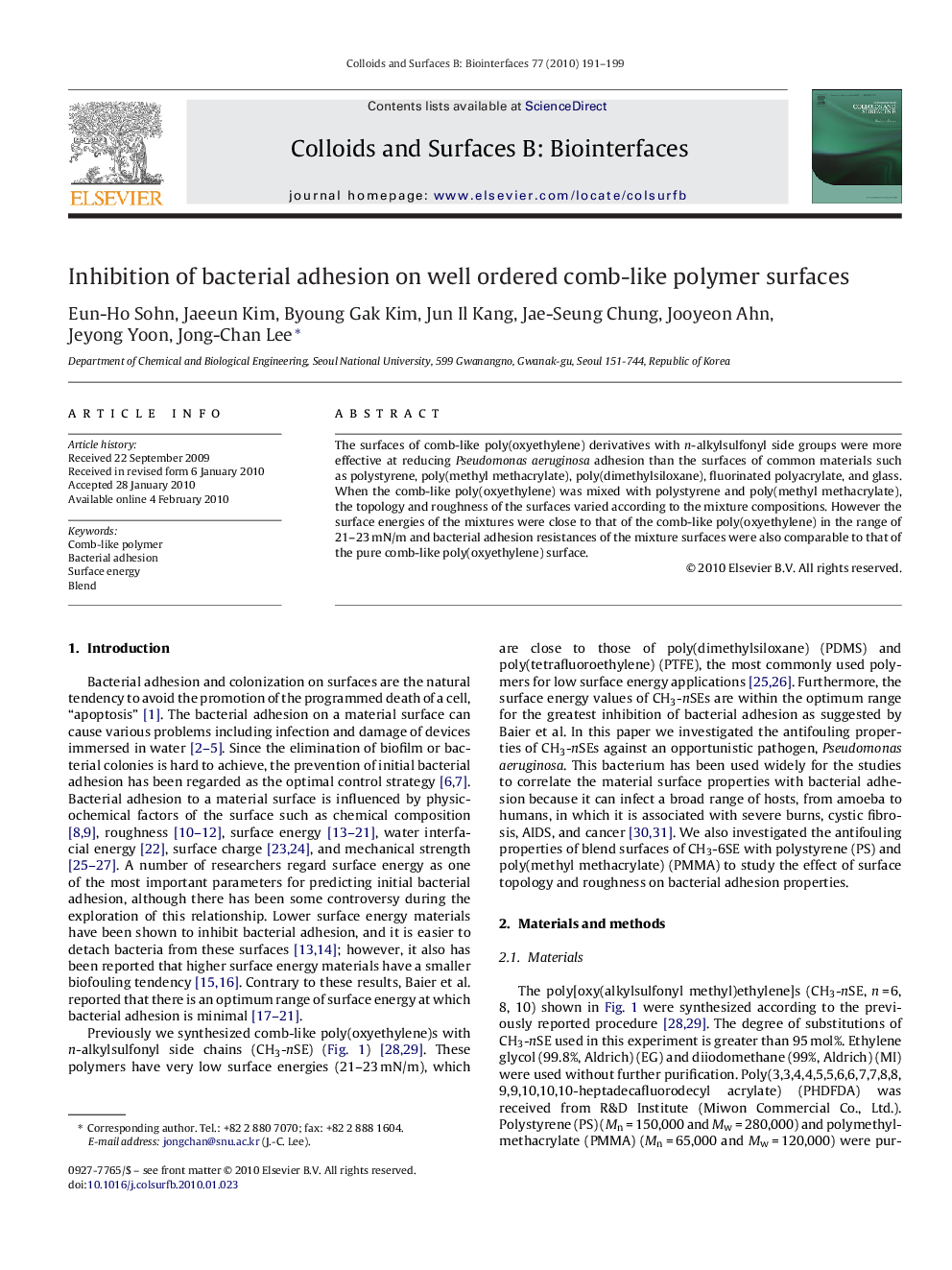| Article ID | Journal | Published Year | Pages | File Type |
|---|---|---|---|---|
| 601495 | Colloids and Surfaces B: Biointerfaces | 2010 | 9 Pages |
Abstract
The surfaces of comb-like poly(oxyethylene) derivatives with n-alkylsulfonyl side groups were more effective at reducing Pseudomonas aeruginosa adhesion than the surfaces of common materials such as polystyrene, poly(methyl methacrylate), poly(dimethylsiloxane), fluorinated polyacrylate, and glass. When the comb-like poly(oxyethylene) was mixed with polystyrene and poly(methyl methacrylate), the topology and roughness of the surfaces varied according to the mixture compositions. However the surface energies of the mixtures were close to that of the comb-like poly(oxyethylene) in the range of 21–23 mN/m and bacterial adhesion resistances of the mixture surfaces were also comparable to that of the pure comb-like poly(oxyethylene) surface.
Related Topics
Physical Sciences and Engineering
Chemical Engineering
Colloid and Surface Chemistry
Authors
Eun-Ho Sohn, Jaeeun Kim, Byoung Gak Kim, Jun Il Kang, Jae-Seung Chung, Jooyeon Ahn, Jeyong Yoon, Jong-Chan Lee,
